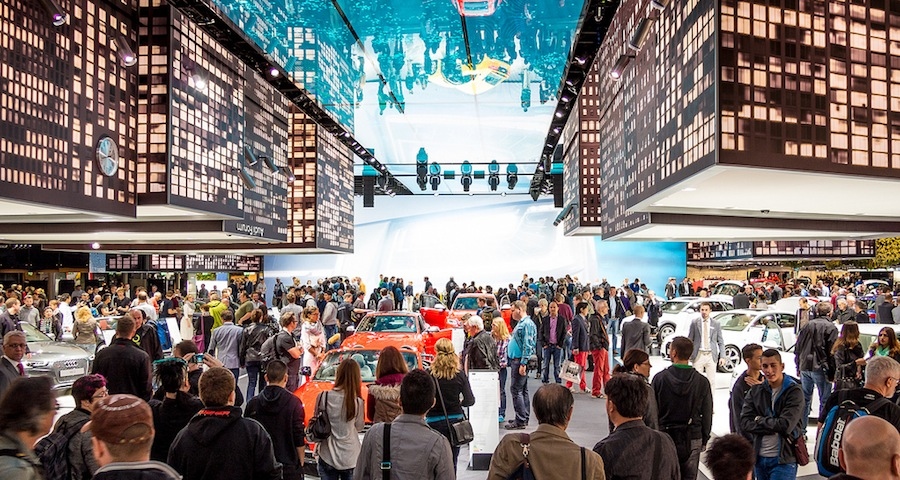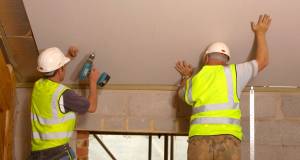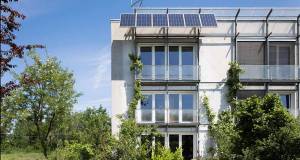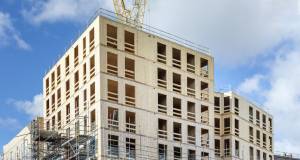
- Blogs
- Posted
Pushing the E-nvelope
This report on September's Frankfurt Motor Show, from airtightness expert Mark Shirley of 2eva.ie, looks at the latest technology in fuel efficient and electric vehicles, and draws parellels with low energy building
I have long admired the automobile industry’s ability to cycle itself away from the brink of imminent disaster and by doing so constantly reinventing itself. The route by which exotic advancements in safety and efficiency take place, from the brutally hard race circuit to your family practi-car, is incredibly fast and demanding.
Likewise the industry has a fascination with keeping one eye on the rear view mirror when restyling or scaling models, and there is very commonly a nod to previous models or designs where an interior aesthetic is reused or alluded to, or a beautiful bonnet or roof line kept.
In that sense it has a lot in common with the construction industry as we will all have seen instances where architects in particular will pay homage to a style or embellishment that they admired in an otherwise very contemporary design.
The obvious differences are the speed at which the automotive industry moves and its foresight in persuading the buying public that it actually needs that new crossover, multipurpose MPV SUV Mini model etc.
In September I attended the Frankfurt Motor Show, a bi-annual event where the carmakers of the world showcase their latest and shiniest new models to the world, and what is seen here today will be in your neighbourhood soon. The full A – Z of manufacturers are here including some you will not have heard of (yet).
What is very clear is the rise of the E Machine; electricity is in and it appears to be here to stay (SEAI , ESB take note). Having flirted with hydrogen powered vehicles or LPG the manufacturers have finally staked their future in either all-electric or hybrid models.
Imagine the Point Depot in Dublin or the Excel Arena in London full of cars. Now imagine that same arena with a couple of extra floors built in just for the exhibition and all of the cars being only from the Mercedes stable of vehicles. Then you get on the Ikea-like walk through that virtually guarantees that you will pass by every single model on display.
This will give you an idea of the scale of the exhibition. This largesse is replicated across the other major German manufactures with many of the lesser marques having the humility to share exhibition space in the same hall.
The good news is that whether you are after something inconspicuous or practical or whether you want to haul bags of cement to site – you can now do it with a more efficient, more environmentally friendly vehicle.
The most starkly contrasting examples of this were the electric Smart Fortwo, which is unbelievably practical for city centre driving, and that of the jaw droppingly exotic world premiered Porsche 918 Spyder — both A+ rated vehicles. The Porsche is a 4.5 litre hybrid that goes to "infinity and beyond" very quickly but uses only three litres of petrol per 100 kilometres (that’s some 94 miles per gallon Mr. Maxol!); it does however cost a mere €850,000.
The point here is that the application of science and need comes up with some pretty spectacular results, and in construction terms this could be a one bed apartment or a very large one-off house having effectively the same very low energy consumption per m² because the design, construction standards, materials and user patterns dictated so.
The automobile and oil industry is not renowned for voluntarily reducing consumption, but has done so because of consumer demand and regulations. With 2020 Nearly Zero Energy Buildingss not too far away how is the construction industry going to react in the next 3 – 5 years to ensure that the technologies and the skill set exists to meet targets?
When can we expect a requirement in the building regulations that it will be mandatory for builders/developers to have a specify E-Charging points/parking spaces per development?
Despite much gnashing of teeth Ireland’s construction industry has on the whole reinvented itself and has the potential to be a very high quality producer of low energy houses. Issues such as air leakage testing, Part (L) renewables etc have been taken on board and mastered for the most part.
The message is that we are not looking to the future, we are in it now, and bravo to those souls who have up-skilled themselves with all types of training for the new normal.
Photo by Robert S Donovan published under Creative Commons Attribution 2.0 Generic Licence.







